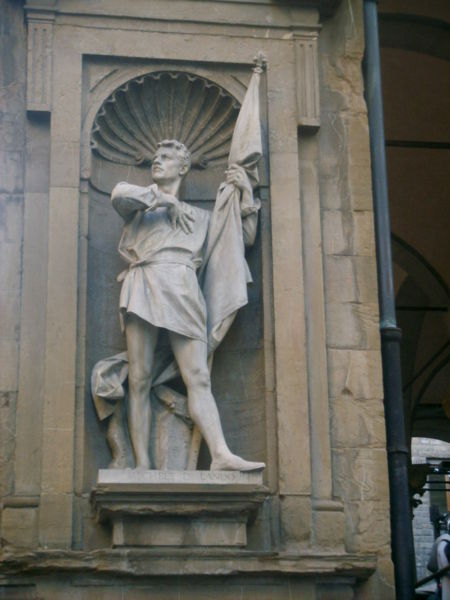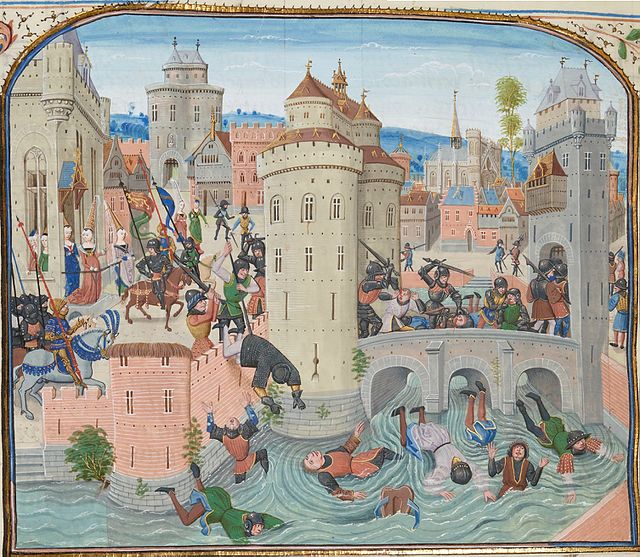The Flemish peasant revolt of 1323–1328, sometimes referred to as the Flemish Coast uprising in historical writing, was a popular revolt in late medieval Europe. Beginning as a series of scattered rural riots in late 1323, peasant insurrection escalated into a full-scale rebellion that dominated public affairs in Flanders for nearly five years until 1328. The uprising in Flanders was caused by excessive taxations levied by the Count of Flanders Louis I and by his pro-French policies. The insurrection had urban leaders and rural factions, which took over most of Flanders by 1325.
1410 miniature of the Battle of Cassel
Popular revolts in late medieval Europe
Popular revolts in late medieval Europe were uprisings and rebellions by peasants in the countryside, or the burgess in towns, against nobles, abbots and kings during the upheavals between 1300 and 1500, part of a larger "Crisis of the Late Middle Ages". Although sometimes known as Peasant Revolts, the phenomenon of popular uprisings was of broad scope and not just restricted to peasants. In Central Europe and the Balkan region, these rebellions expressed, and helped cause, a political and social disunity paving the way for the expansion of the Ottoman Empire.
Richard II of England meets the rebels of the Peasants' Revolt
Michele di Lando, placed in the office of gonfaloniere of Florence by the revolt of the Guild-less Ciompi
Defeat of the Jacquerie




